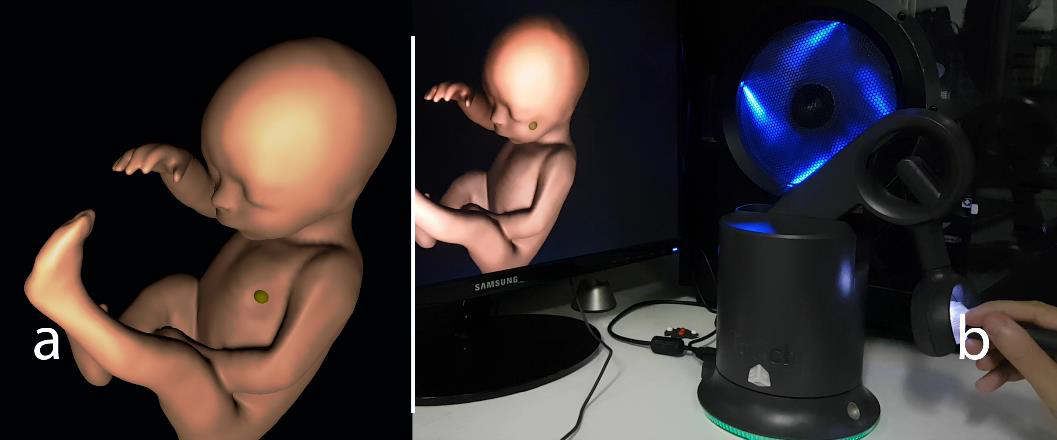An interactive experiment combining ultrasound, magnetic resonance imaging, and force feedback technology to physically feel the fetus during pregnancy
Published in European journal of radiology, 2019

Werner, H., Arcoverde, V., Ribeiro, G., Lopes, J., Jauregui, J. J. H., Raposo, A. B., & Júnior, E. A. (2019). An interactive experiment combining ultrasound, magnetic resonance imaging, and force feedback technology to physically feel the fetus during pregnancy. European journal of radiology, 110, 128-129.
https://www.ejradiology.com/article/S0720-048X(18)30415-7/abstract
Abstract
2 image-scanning technology has led to vast improvements in fetal assessments. Ultrasound (US) is the main technology for fetal evaluation, and magnetic resonance imaging (MRI) is generally used when US cannot provide high-quality images. This paper presents an interactive bidirectional actuated human–machine interface experiment involving the combination of a haptic device system (force-feedback technology) and noninvasive medical image technology. Haptics refers to manual interactions with real or virtual environments that enable touching, feeling, and manipulating objects in these environments [1]. In the context of virtual reality, haptic sensations are created by actuators or motors of specific devices, which generate vibrations to the users, and are controlled by software. The potential of haptics in medical training through simulations has been recognized as a way to acquire clinical and surgery skills.
Bibtex:
@article{werner2019interactive,
title={An interactive experiment combining ultrasound, magnetic resonance imaging, and force feedback technology to physically feel the fetus during pregnancy},
author={Werner, Heron and Arcoverde, Vin{\'\i}cius and Ribeiro, Gerson and Lopes, Jorge and Jauregui, Jan Jose Hurtado and Raposo, Alberto Barbosa and J{\'u}nior, Edward Araujo},
journal={European journal of radiology},
volume={110},
pages={128--129},
year={2019},
publisher={Elsevier}
}
